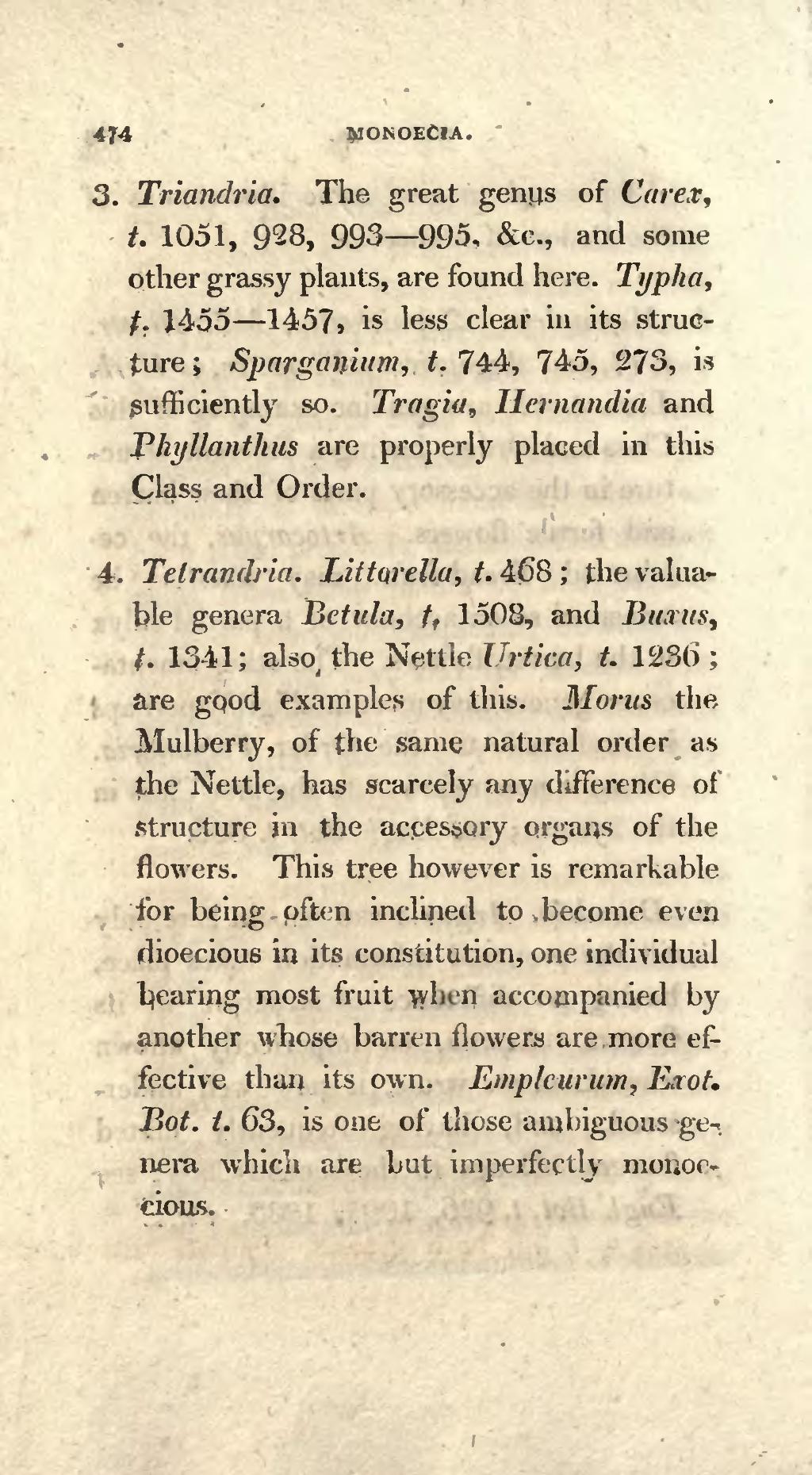3. Triandria. The great genus of Carex, t. 1051, 928, 993—995, &c., and some other grassy plants, are found here. Typha, t. 1455—t. 1457, is less clear in its structure; Sparganium, t. 744, 745, 273, is sufficiently so. Tragia, Hernandia and Phyllanthus are properly placed in this Class and Order.
4. Tetrandria. Littorella, t. 468; the valuable genera Betula, t. 1508, and Buxus, t. 1341; also the Nettle Urtica, t. 1236; are good examples of this. Morus the Mulberry, of the same natural order as the Nettle, has scarcely any difference of structure in the accessory organs of the flowers. This tree however is remarkable for being often inclined to become even dioecious in its constitution, one individual bearing most fruit when accompanied by another whose barren flowers are more effective than its own. Empleurum, Exot. Bot. t. 63, is one of those ambiguous genera which are but imperfectly monoecious.
